#shanti vives
Text
List of songs below:
1. The leaving of Liverpool
2. The worst old ship
3. William Taylor
4. Boney
5. Lowlands
6. Whiskey Johnny
7. Hoorah for the Blackball line
8. Larry Marr
9. The fire ship
10. Shenandoah
11. Tom’s gone to Hilo
12. Leave her Johnny
2 notes
·
View notes
Text
youtube
This is seriously one of the cutest songs I've heard in a long time. It was the first song in months to genuinely take me back into Ziona mode, even though I can picture a super cute montages of Younger Eleni on a ship with all the dwarves, ambitious and confused. Omfg. Its so precious. And it really reminded me of the spirit of Ziona. The confidence. I could imagine blasting this as I drove my trek to dnd last year, ambitious, excited, and in over my head.
Oh man. I really miss my bard. (Psst if anyone wants to interact with Ziona please do. I genuinely love her and I seriously miss that campaign 😭)
#Eleni#Captain El#Toss a bard to your Witcher#Dnd#Dnd oc#Oc vives#Vibes#Pirate#Sea shanties#Cute#The Longest John's#Bard#Ziona#Youtube
0 notes
Text
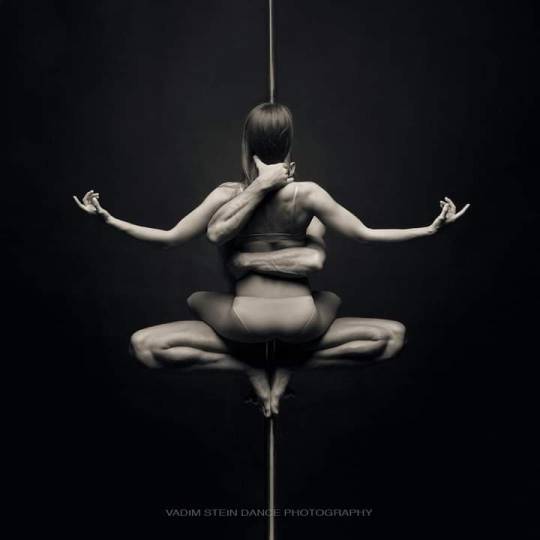
Il sesso e' una forma di arte grezza, ed ogni essere umano e' l'artista che gliene da' forma e vita...
Approcciarsi al sesso e' come avere davanti a se' una tela bianca, un blocco di marmo da scolpire...
Se cominci a dipingere un quadro con il desiderio o l'idea di creare un capolavoro, sta' pur certo che sara' l'opera meno incantevole e fantasiosa che tu possa creare...
I capolavori sono rari e sono sempre figli di una forte ispirazione, un'ispirazione irrazionale e spontanea che ti guida, e crea al di la del tuo pensiero e del tuo sapere...
Fare l'amore e' l'unione ispirata di due artisti, un dono reciproco che va al di la dell'esigenza personale, del contesto, della forma, della tempistica, della conoscenza, dell'aspettativa, della costruzione, delle regole, dell'ego.... e' un nutrimento simbiotico che vive nel cuore, nel rispetto e nell'energia, e quando riesci ad entrare in questa dimensione, allora sarai nella vera essenza di questo infinito ed incredibile regalo che la natura ci ha fatto...
M. Shanti
35 notes
·
View notes
Text



NOTAS PRÁNICAS (2-2)
SAMSARA
Es un concepto escatológico procedente de la más profunda cosmovisión del lejano oriente. Vigente hasta hoy y usado originalmente tanto en el jainismo, budismo cómo en el hinduismo, se refiere al gran proceso de evolución material/espiritual que contiene a todas las formas de vida sobre el globo terrestre. Regido en particular por la ley del karma, este ciclo es asociado con una rueda que levanta procesos de experiencias vitales (colectivos e individuales) cómo también su descenso, luego nuevamente su ascenso y así sucesivamente giramos por azar kármico. La exhortación que hacen las tradiciones es romper ese ciclo de nacimientos y muertes a través de una ascesis efectiva que desarrolle totalmente las cualidades lumínicas de ātman (escencia individual) del sādhaka para apoximarse poco poco, vida tras vida hacia el paramātmā (Conciencia Suprema), es decir Yoga (con mayúscula).
SHANTI
Significa paz. Una persona que está en paz es alguien próximo a las observancias que nos propone la cultura del Yoga. Sólo un corazón pleno y consciente tanto del pasado cómo del devenir es capaz interactuar con las dualidades del mundo material de manera pacífica. Claro, paz no es sinónimo de inmovilidad, por el contrario… la paz inspira acciones activas de cohesión familiar y social, genera entendimiento donde hay disputa con un corazón pleno de Amor universal indiferenciado, de comprensión que todos los seres poseemos la misma esencia espiritual adquiriendo otra terrena experiencia, por esto actúa justa y necesariamente sin más ni menos.
PRANA
No es primera vez que compartimos esta misma definición sobre prana en nuestras redes, es un término tan simple pero muy importante en el contexto del Yoga que bien vale la pena volver a revisar. Palabra sánscrita que significa aliento vital, fuerza que anima toda forma viviente. Todo cuanto vive contiene en su constitución sutil prāṇa प्राण. Los alimentos contienen prana, el aire que respiramos contiene prana, el agua que bebemos tiene prana, nuestras palabras, sentimientos, creaciones expresan prana. Es importante apropiarse del prana con alimentos, oxígeno, pensamientos y sentimientos de la mejor calidad posible. Cuando el prana decae sobreviene la vejez, la tensión, el cansancio y la enfermedad. La gama de actividades de Círculo Pránico propician la comprensión de esta nueva palabra para que consigamos una vida saludable y más feliz.
0 notes
Photo
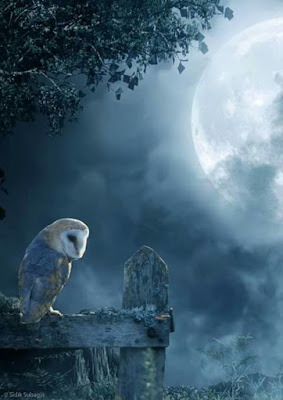
Para as bruxinhas que acordam às 3 hs da manhã 
Três horas da madrugada é sem dúvida uma hora especial para muitos, é chamada por alguns de hora morta, hora macabra, etc. e afirmam que neste momento a atividade paranormal das pessoas está em alta. Também se afirma que Jesus teria morrido na cruz às 15 horas e que 3 horas da noite seria a hora inversa. Muitos acordam nesta hora.
Biológicamente falando, por volta da 3 horas da manhã temos a menor temperatura do nosso corpo, e alguns hormônios tem o seu ponto de maior ou menor produção. Mais ou menos nesta hora a maioria das pessoas também estará no segundo ciclo de sono, em estágio 4, onde nosso cérebro trabalha na frequência Theta, que equivale a meditação profunda.
Às três horas o Sol também faz uma sesqui-quadratura com a nossa vertical, causando um aspecto tenso, que afeta a psique humana.
—
Neste horário, em todo o planeta Terra é onde se travam as maiores batalhas entre as falanges trevosas e as forças de Luz. A maioria dos humanos está em estado propenso ao contato com as dimensões mais sutis.
As forças trevosas utilizam este momento para implantarem aparelhos de controle e sugadores de energia magnética (plasma ou ectoplasma), intervir na mente de seus alvos, implantarem sugestões e roubar energia vital.
Nestes momentos os trabalhadores da Luz, que são minoria numérica neste planeta, travam intensas batalhas de defesa, para garantir o livre arbítrio dos humanos e impedir que sejam manipulados.
Esta faixa horária que varre o planeta é acompanhada de uma intensa luta entre estas forças, e nesta hora os dois lados necessitam de todo o magnetismo possível, que é a arma utilizada nestas batalhas. Somente com esta energia mais densa os trevosos conseguem implantar artefatos nos humanos, para controle e extração de energia. Por sua vez as forças de Luz necessitam desta mesma energia densa para combater e aprisionar os trevosos, e destruir seus laboratórios.
Neste momento, toda oração, toda prece e toda doação de energia influencia significativamente o resultado de tudo que acontece.Se você acordar nesta hora, ore ou dirija seus pensamentos para a Luz, permaneça em Paz e na vibração do Amor !
Não se iludam, seu mundo vive uma luta constante entre duas forças opostas. Este luta acontece 24 horas por dia, mas é intensificada neste horário onde vocês ficam mais suscetíveis às influencias sutis de outras dimensões.
através de Prama Shanti
2 notes
·
View notes
Text
Vivarium (Irlanda-Dinamarca-Bélgica, 2019)
(C12)
Director: Lorcan Finnegan
Guión: Garret Shanley
Actores: Imogen Poots, Jesse Eisenberg.

Vivarium se estrena en medio del confinamiento mundial debido a la pandemia que vive la humanidad. Y que mejor momento para hacer junto con esta película una reflexión sobre los espacios cerrados, la cuarentena, y las rutinas a las que día a día nos hemos visto sometidos y acostumbrado.
Una pareja joven, Gemma y Tom, encarnados respectivamente por una increíble Imogen Poots y Jesse Eisenber, están en busca de un hogar. Se da a entender mediante el origen de la película, residen en Irlanda. Un día, van a una pequeña inmobiliaria, un local chico, algo nada fuera de lo normal, con sus maquetas y anuncios enormes donde muestran a las familias viviendo felices en dichos hogares. Al fondo, allá en un escritorio se encuentra Martin (estupendamente personificado por Jonathan Aris, este actor sabe manejar perfectamente su rostro y estas facciones tan frías, parsimoniosas, manipuladoras tal vez) quien con un rostro robotizado, y con movimientos muy cuidados los recibe. Casi no los deja hablar, se acerca primero a Gemma. Sabe que ella es la que toma el rumbo de ambos. Después de una charla pequeña, los convence (casi a la fuerza) de ir a visitar el complejo residencial: Yonder.
A la llegada, recorren varias calles en donde por ambos lados, hay casas exactamente iguales. “Los suburbios” dice Tom, no muy convencido de esto. La casa que les muestra Martín es la número 9. Comienzan un extraño recorrido por la casa. Ya amueblada, tiene colores sobrios, todo cuidosamente colocado en su respectivo lugar, una cocina ya con todo instalado, y hasta las recamaras amuebladas, incluida la de un niño.
Cuando se disponen a ver el jardín trasero, Martín desaparece. Y ambos personajes, Gemma y Tom, quedarán atrapados en la casa y en los suburbios en una especie de pesadilla urbana.
Como primer punto y creo que sería algo esencial destacar es el peculiar trabajo de imagen que crean Finnegan de la mano de su director de fotografía, el español Macgregor. Añaden los toques futuristas, casi al alcance de películas tan delicadas como “Robot & Frank” (Que también estudia un poco sobre la soledad y el distanciamiento) o incluso “Ex Machina”, esto resaltado en los vehículos de los personajes, compactos, coloridos, rápidos. O la tendencia en los acabados tan minimalistas pero a la vez, elegantes.
Aunado a esto, el arte que se imprime en cada fotograma de la película, desde el poster promocional, podemos encontrar claras referencias a la obra pictórica de M. C. Escher, esta arquitectura laberintesca con la que se juega, invitándonos a perdernos inconcientemente entre este montón de casas. Magritte también reluce por acá. Véase la escena en donde se puede ver un cuadro que esta en la pared de la sala. La pintura es de una casa, casi idéntica a la de ellos, una referencia a la serie de pinturas que el pintor belga realizaría, una casa, solitaria, con algunos arboles altos y esparcidos por detrás, mientras que lo único que lo ilumina es una tenua farola. Y como última referencia me atrevería a decir que también podremos encontrar referencias al trabajo de Edward Hopper. Con estos ambientes solitarios y desolados, funcionan perfectamente cuando se trata de lugares abandonados o como en este caso, sitios donde no reside mucha vida humana.
La principal lectura y propósito de este filme es el que da su propio director. Finnegan nos invita a relizar una introspección a profundidad sobre uno de los problemas que sufre la humanidad en pleno siglo XXI; la capacidad casi nula de adquirir hogares con una calidad humana rescatable.
Las inmobiliarias, en conjunto con los gobiernos y esta displicencia sobre querer crear espacios reducidos, alejados en la nada, y en condiciones horrorosas, ha llevado a la creación y nacimientos de estos suburbios en donde ya no importa la calidad de vida, privacidad, el espacio recreativo, o la cercanía con la ciudad y la naturaleza. Imponen ciertos estándares de vivienda a alto costo adquisitivo, y que pocos pueden pagar.
Esta situación recorre el mundo entero. No solo es Irlanda. Sino las grandes capitales como Alemania, China, Japón, y por supuesto, México.
Por otro lado, que bien queda el uso de las canciónes “Rudy, a message to you” de Dandy Livingstone y de “007 Shanty Town” de Desmond Dekker, que en ambas canciones pueden dar una premisa bien de lo que va a suceder durante el largometraje. Una joya la escena en la que Gemma y Tom bailan a la mitad de la calle, mientras que lo único que los ilumina son las luces de su automóvil.
Como bien dice el título de la película, sin dar spoilers, la segunda y gran parte del resto de la película va sobre esto. Sobre estar en una especie de vivero, en donde estos dos personajes tendrán que enfrentar diferente adversidades, como las rutinas, el constante pensar en que si alguien o algo irá por ellos, el choque de ideas, la maternidad, complicidad, entre otros dilemas.
Para finalizar, Vivarium tiene varios propósitos, lecturas y tramas. Es una película de ciencia ficción, de suspenso, terror psicológico. Pero lo más notable es la forma en que llega, justo en este momento en el que la realidad esta superando a la ficción. En el que cada vez estamos más cerca de este mundo ficticio que poco a poco el humano se ha ido creando, y se ha ido acostumbrando.
Vivarium es una gran película que no tenemos que perder de vista, ni mucho menos a su director ni al gran elenco que la conforma.
youtube
5.04.20
Crítica escrita por: Aldo Martínez T.
#VivariumMovie#Vivarium#Jesse Eisenberg#Imogen Poots#Movie#Cine#Cinema#Photography#Critics#Analitics#Aldo Martinez T#AlgunasNotasQueLeer
1 note
·
View note
Photo
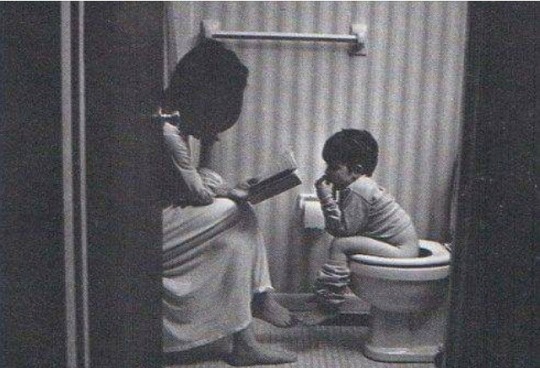
“Come va?
1. Icaro: “Uno schianto”
2. Proserpina: “Mi sento giù”
3. Prometeo: “Mi rode…”
4. Teseo: “Finché mi danno corda…”
5. Edipo: “La mamma è contenta”
6. Damocle: “Potrebbe andar peggio”
7. Priapo: “Cazzi miei”
8. Ulisse: “Siamo a cavallo”
9. Omero: “Me la vedo nera”
10. Eraclito: “Va, va…”
11. Parmenide: “Non va”
12. Talete: “Ho l’acqua alla gola”
13. Epimenide: “Mentirei se glielo dicessi”
14. Laura Petrarca: “fortuna che sono fortunata ”
15. Demostene: “Difficile a dirsi”
16. Pitagora: “Tutto quadra”
17. Ippocrate: “Finché c’è la salute…”
18. Socrate: “Non so”
19. Diogene: “Da cani”
20. Platone: “Idealmente”
21. Aristotele: “Mi sento in forma”
22. Plotino: “Da Dio”
23. Catilina: “Finché dura…”
24. Epicuro: “Di traverso”
25. Muzio Scevola: “Se solo mi dessero una mano…”
26. Martin Dovinto: “ il bello degli incontri”
27. Fabio Massimo: “Un momento…”
28. Giulio Cesare: “Sa, si vive per i figli, e poi marzo è il mio mese preferito…”
29. Lucifero: “Come Dio comanda”
30. Giobbe: “Non mi lamento, basta aver pazienza”
31. Geremia: “Sapesse, ora le dico…”
32. Noè: “Guardi che mare…”
33. Onan: “Mi accontento”
34. Mosè: “Facendo le corna…”
35. Cheope: “A me basta un posticino al sole…”
36. Sheherazade: “In breve, ora le dico…”
37. Patrizia Romano: “fortuna sono na Napoletana”
38. Carlo Magno: “Francamente bene”
39. Dante: “Sono al settimo cielo”
40. Giovanna d’Arco: “Si suda”
41. San Tommaso: “Tutto sommato bene”
42. Erasmo: “Bene da matti”
43. Colombo: “Si tira avanti”
44. Lucrezia Borgia: “Prima beve qualcosa?”
45. Giordano Bruno: “Infinitamente bene”
46. Lorenzo de’ Medici: “Magnificamente”
47. Cartesio: “Bene, penso”
48. Berkeley: “Bene, mi sembra”
49. Hume: “Credo bene”
50. Pascal: “Sa, ho tanti pensieri…”
51. Enrico VIII: “Io bene, è mia moglie che…”
52. Galileo: “Gira bene”
53. Torricelli: “Tra alti e bassi”
54. Pontorno: “In una bella maniera”
55. Desdemona: “Dormo tra due guanciali…”
56. Newton: “Regolarmente”
57. Leibniz: “Non potrebbe andar meglio”
58. Dante Shanti: “ sottile ”
59. Hobbes: “Tempo da lupi”
60. Vico: “Va e viene”
61. Papin: “Ho la pressione alta”
62. Montgolfier: “Ho la pressione bassa”
63. Franklin: “Mi sento elettrizzato”
64. Robespierre: “Cè da perderci la testa”
65. Marat: “Un bagno”
66. Casanova: “Vengo”
67. Goethe: “C’è poca luce”
68. Beethoven: “Non mi sento bene”
69. Shubert: “Non mi interrompa, per Dio”
70. Novalis: “Un sogno”
71. Leopardi: “Sfotte?”
72. Foscolo: “Dopo morto, meglio”
73. Manzoni: “Grazie a Dio, bene”
74. Sacher-Masoch: “Grazie a Dio, male”
75. Sade: “A me bene”
76. D’Alambert e Diderot: “Non si può dire in due parole”
77. Kant: “Situazione critica”
78. Hegel: “In sintesi, bene”
79. Schopenhauer: “La volontà non manca”
80. Cambronne: “Boccaccia mia…”
81. Marx: “Andrà meglio…”
82. Carlo Alberto: “A carte 48”
83. Paganini: “L’ho già detto”
84. Darwin: “Ci si adatta”
85. Livingstone: “Mi sento un po’ perso”
86. Nievo: “Le dirò, da piccolo…”
87. Nietzsche: “Al di là del bene, grazie”
88. Mallarme’: “Sono andato in bianco”
89. Proust: “Diamo tempo al tempo”
90. Henry James: “Secondo i punti di vista”
91. Kafka: “Mi sento un verme”
92. Musil: “Così così”
93. Joyce: “Fine yes yes yes”
94. Nobel: “Sono in pieno boom”
95. Larousse: “In poche parole, male”
96. Curie: “Sono raggiante”
97. Dracula: “Sono in vena”
98. Croce: “Non possiamo non dirci in buone condizioni di spirito”
99. Picasso: “Va a periodi”
100. Lenin: “Cosa vuole che faccia?”
101. Hitler: “Forse ho trovato la soluzione”
102. Heisemberg: “Dipende”
103. Pirandello: “Secondo chi?”
104. Sotheby: “D’incanto”
105. Bloch: “Spero bene”
106. Freud: “Dica lei”
107. D’Annunzio: “Va che è un piacere”
108. Popper: “Provi che vado male”
109. Ungaretti: “Bene (a capo) grazie”
110. Fermi: “O la va o la spacca”
111. Camus: “Di peste”
112. Matusalemme: “Tiro a campare”
113. Lazzaro: “Mi sento rivivere”
114. Giuda: “Al bacio”
115. Ponzio Pilato: “Fate voi”
116. San Pietro: “Mi sento un cerchio alla testa”
117. Nerone: “Guardi che luce”
118. Maometto: “Male, vado in montagna”
119. Savonarola: “E’ il fumo che mi fa male”
120. Orlando “Scusi, vado di furia”
121. Cyrano: “A naso, bene”
122. Volta: “Più o meno”
123. Pietro Micca: “Non ha letto che è vietato fumare”
124. Jacquard: “Faccio la spola”
125. Malthus: “Cè una ressa…”
126. Bellini: “Secondo la norma”
127. Lumiere: “Attento al treno!”
128. Gandhi: “L’appetito non manca”
129. Agatha Christie: “Indovini”
130. Einstein: “Rispetto a chi?”
131. Stakanov: “Non vedo l’ora che arrivi ferragosto…”
132. Rubbia: “Come fisico, bene”
133. Sig.ra Riello: “Sono stufa!”
134. La Palisse: “Va esattamente nella maniera in cui va”
135. Shakespeare: “Ho un problema: va bene o non va bene?”
136. Alice: “Una meraviglia”
137. Dr. Zap: “Bene, la sai l’ultima?”
138. Verga: “Di malavoglia”
139: Heidegger: “Quante chiacchiere!”
140. Grimm: “Una favola!”
●Umberto Eco, Il secondo diario minimo
29 notes
·
View notes
Text
18) La despedida de un regalo de arriba (Isa y Guada)
Finalmente llego el mail para hacer el check in, 14 de enero vuelta a casa de Guadalupe Yofre.
Anoche bajó de su cuarto para dormir con nosotras, no podíamos dormirnos, estábamos que no parábamos de reírnos (mientras tanto 3 extranjeras dormían en el cuarto).
Sonó el despertador a las 5:45 y rápidamente nos cambiamos y partimos a la ultima Misa de nuestra querida amiga. “Maestro, donde vives? venid y lo verais” las tres caminando para el encuentro con el Señor.
Al terminar la misa compartimos el desayuno junto con los voluntarios en Mother House y cantamos a quienes se retiraban haciéndoles la despedida: 🎼 we thank you, we’ll miss you, we love you🎼. Entre ellos Guada y nuestro querido amigo Alejandro, el shhhileno.
Esta mañana Isa decidió faltar a Shanti Dan e ir a Prem Dan para compartir la última mañana de voluntariado estando las tres juntitas. Fue muy conmovedor ver cómo Guada Y. Se iba despidiendo de las pacientes, sus gestos de cariño con cada una y su mirada profunda para con ellas.
No podía faltar la foto del trío en este lugar así que acá abajo se las compartimos (las 3 con los delantales de trabajo).
Tomamos un tuc tuc (para los que no lo conocen les dejo la foto), éramos 9 incluyendo a Maleki, quien nos llevaba. Nos dirigimos a comprar una rica picada mientras ella iba al hotel a preparar sus últimas cosas y bañarse. Que buena picada nos mandamos y la compañía para despedir a la señorita ni les cuento!
Iban pasando los minutos y Guada blasco ya lloraba. No queríamos que lleguen las 16:00 porque eso indicaría tomar un taxi rumbo al aeropuerto...
A pesar de que ella quería hablar, hablar y hablar con todos los voluntarios ahí presentes le pedimos que venga al cuarto por lo menos los últimos 10 minutos como para poder despedirnos a solas y tomar unos últimos mates con nuestra querida amiga. (Obvio que lo hizo porque responde a todo lo que le decimos la tenemos de acá para allá, es nuestra pichona jajaja)
16:00hs 😱 últimas despedidas con mexicanas, peruanas, españolas, chilenos y argentinas por supuesto. Se ve que la sensibilidad viene de la familia blasco porque hasta candelaria nos deleitó con unas lágrimas... partimos valija en mano y mochila en espalda, empezamos a caminar y como es de esperar de toda mujer, tuvo que volver. “Guada, agarraste tu Biblia?” Preguntó Isa, casi entra en colapso pero por suerte Guada Blasco se calzó las Nike y corrió a toda velocidad a buscarla!
Ahora si, listas para partir, llego el taxi y rumbo al aeropuerto nos fuimos. Unas palabras de despedida y como no cerrar con un rosario de la mano de maria para agradecer semejante regalo, regalo de la vida, regalo de Calcuta y regalazo de compartir semejante experiencia juntas.
Llegamos al aeropuerto, ultima despedida,último abrazo y ultimas sonrisas! Saludándola desde la ventana del taxi nos volvimos a nuestra casa india.
Este viaje nos ayudó a crecer entre las tres. Para los que nos conocen mucho sorpréndanse! No hubo una sola pela, nada de discusiones, fueron constantes sonrisas!!! Esperemos que estos días no llegue la discordia porque según Guada blasco “sin Guada nos vamos a matar” jajaja mentira!
Esperemos que Dios nos siga dando la gracia de hacerse presente en medio de esta amistad y que lo único que haga es crecer en nosotras. Estamos seguras que nos regala día a día el poder compartirlo.
En un mes volverán a estar juntas las tres!
Los queremos mucho! sigan rezando por nosotras que acá estamos muy bien!!!
Amigas de humaneitor, las extrañamos mucho!!!!
PD: Guada volveeeee (la tipa todavía no subió al avión 🤣)
PD2: shiileeeeno buen viajeee



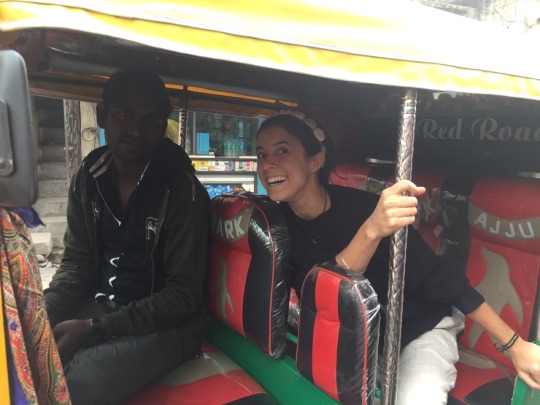


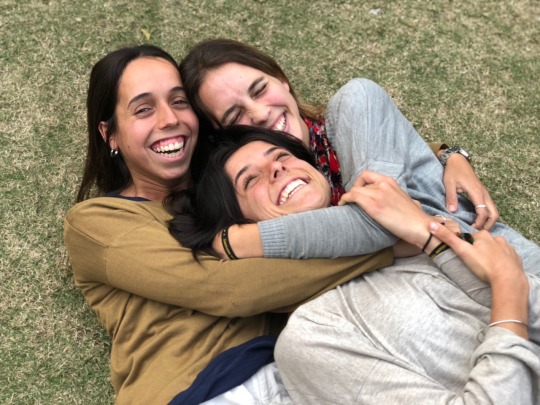

1 note
·
View note
Photo
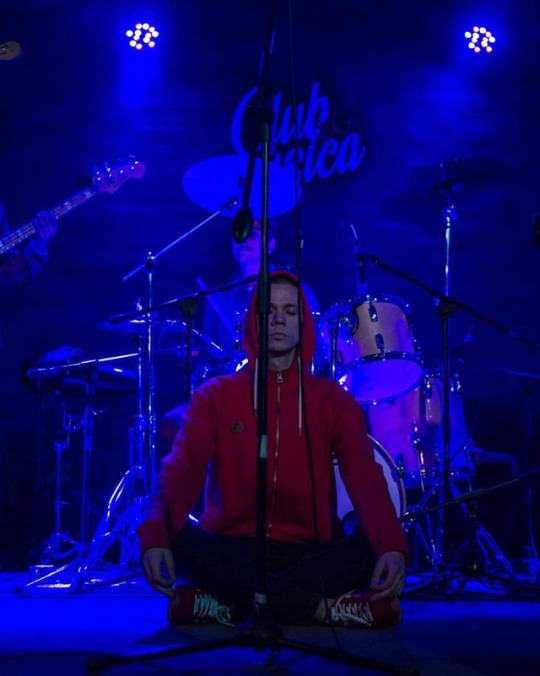
📸 sobre la importancia del orar y meditar para encontrar la deidad que adentro mío vive y que me incita a actuar, y el árbol que contenido adentro de la semilla fue perfecto y no detuvo sus ramas 📿🕉. fotónnn de crack @hubenix, con @loschildren en el @clubdelamusica 🎶 nos vemos el sábado I&I? . . . . . . . . #loschildren #clubdelamusica #festival #live #show #reggae #riddim #rockers #freestyle#warriors #rap #mc #hh #omnamahshivaya #meditation #om #shanty #jah#love #peace #power #strengh (en Club de la Música)
#rap#warriors#live#freestyle#peace#loschildren#power#reggae#strengh#rockers#om#shanty#love#show#meditation#clubdelamusica#jah#festival#riddim#omnamahshivaya#mc#hh
1 note
·
View note
Note
(music anon) hmmm like your playlist a year and a half ago. Not sure if you remember the songs or not because it's been a while ago lol
ok, i keep most of my playlists so here’s the one where i jumbled a bunch of songs of every genre together:
30 Rock Theme
A Quoi Ça Sert L'amour / Adieu / After the Ball / All For You / Alone Again Naturally
Back in Town / Bad Boy, Good Man / Bambino / Bang Bang / Bang Bang You’re Dead / Besame Mucho / Between the Devil and the Deep Blue Sea / Billy’s Bones / Bittersweet / Blue Suede Shoes / Bourbon Street / Busy Line / But Now I’m Back
C'est comme si, C'est comme ça / Cabin Fever / Complainte de la Butte / Count Those Freaks / Crawling the Walls / Cryin’ for the Carolines / Cunnilingus mon Amour
Dance Baby / Danse et Danse / Darkness on the Delta / Dernière Danse / Diamonds Are a Girl’s Best Friend / Do it This Way / Down in New Orleans (Finale)
Egyptian Ella
Fancy / Fancy a Tipple / Farewell Kabarista / Finlandia Hymn / Fishies / Five Foot Two, Eyes of Blue / Foolish to Think / Frankie and Johnny
Give Me the Simple Life / Give my Regards to Broadway / Good Old-Fashioned Lover Boy
Hands Across the Table / Happy Days Are Here Again! / Hello, Baby / How Big Can You Get?
I Always Knew / I Am What I Am / I Get Ideas / I Get What I Want / I Hate Myself / I Love Paris / I Still Get Jealous / I Still Love You All / I Wanna Be Just Like You / I Want to Be Bad / I’ll Be Seeing You / I’m Number One / I’m a Fool to Want You / I've Got a Lovely Bunch of Coconuts / Into the Unknown / Irish Air / It Had to Be You
Johanna / Jul, Jul, Strålande Jul
Katie at the Races / Kissing a Fool
L.O.V.E. / La Vie Cajun / Lady / Land of the Dead / Lay Your Head Down / Le Jour le Plus Froid du Monde / Let’s Face It, I’m Cute / Let’s Kill Tonight / Let’s Misbehave / Lida Rose / Life is Just a Bowl of Cherries / London is the Place for Me
Mademoiselle Clé / Maintenant / Mam’selle / Me, Who Am I? / Moules Frites / Mysterious Mose
Never Drink 'Em Dry (Johnny Tarr's Funeral) / No Charge / Nobody’s Sweetheart / Nothing but the Best / Now’s the Time to Fall in Love
Ol’ Mac Donald / Out of the Question / Over the Garden Wall
Pathetique / People Will Say We’re in Love / Positively, Absolutely / Pub & Go
Se Dire Adieu / Sea Shanty / She Loves Me / Shoo the Hoodoo Away / Short Skirt Long Jacket / Sibella / Since Tommy Atkins Taught the Chinese How to Charleston / So Romantic / South American Joe / Spiderman / Still in Love with You / Summer Swing / Summer Wine / Supreme / Surrender / Sweet Pea
That XX / The Best Splendid Elegance / The Ghost of Smokey Joe / The Ghost of Stephen Foster / The Highway Man Song / The Limerick Rake / The Maestro / The Mermaid / The Night Pat Murphy Died / The One Controlling Eastern Europe's Land / The Pink Panther Theme (Malibu Remix) / The Rainbow Connection / The Room Where It Happens / The Sheik of Araby / The Sickbed of Cuchulainn / The Sidewalks of New York / The Suits are Picking Up the Bill / There's a Good Reason These Tables are Numbered Honey, You Just Haven't Thought of it Yet / These Foolish Things / They Can't Take That Away From Me / Til Then / Time for Tea / Too Close for Comfort / Tous Les Mêmes
Vive le Swing
Wash Jones / When We Both Reached for the Gun / When We’re Human / Whistling in the Dark / Who Walks In When I Walk Out?
Yes Sir, That’s my Baby / Yes She Do / Your Obedient Servant
Казачему роду нема переводу!
Well, there you are. Sorry if some of the links don’t work, I haven’t checked them in a few years. If this isn’t the playlist you were thinking of, let me know.
7 notes
·
View notes
Text
Hidden Fortune to be Remastered for Vive Focus
This week finally saw HTC unveil its long awaited standalone head-mounted display (HMD), the Vive Focus. The new headset which was originally announced by Google to use the Daydream platform is no longer occurring, with HTC now using its own proprietary system, Vive Wave. Due to arrive first in China next year, today developer Archiact has announced that it’ll be remastering its puzzle videogame Hidden Fortune for Vive Focus.
Now called Hidden Fortune: Unexplored, the original title first arrived for Samsung Gear VR earlier this year and then Google Daydream. It’s a virtual treasure hunt, where players wield a mystical wand to gather hidden objects, beat tricky challenges, and uncover the story.
Now though, Archiact has the ability to make Hidden Fortune: Unexplored even more immersive using Vive Focus’ inside-out tracking technology World Sense. With the addition of room-scale, the fantasy-scapes of Hidden Fortune can be explored freely, allowing players to peek under tables or reach up high on tip-toe to search every nook and cranny.
“With a hidden object game like Hidden Fortune, we knew it would make the perfect untethered experience,” said Ed Lago, senior producer at Archiact in a statement. “The gameplay has been remastered to add room-scale exploration and more vertical freedom. Players will get to rediscover the beauty and mystery of Outcast Cove like never before.”
Archiact has released Hidden Fortune in an episodic format, with the first being Outcast Cove and then Episode Two: Shanty Seas in September. The DLC was free for those who’d purchased the first episode, while new players were able to get hold Chapter One for free and purchase Episode Two for $5.99 USD. Each offers three levels of difficulty.
Currently it seems as though Hidden Fortune: Unexplored will just feature just Outcast Cove, as the studio had to improve the walkable spaces for players to roam and discover.
Hidden Fortune: Unexplored will be available through Viveport for the HTC Vive Focus in 2018. As yet there’s been no official date set for the headset launch next year.
VRFocus will continue its coverage of Archiact, reporting back with the latest updates.
from VRFocus http://ift.tt/2iksSD7
1 note
·
View note
Photo

MENSAJE SAI DEL DÍA SÁBADO 12 DE OCTUBRE DE 2019 OM Sri Sai Ram La muerte se precipita como el halcón sobre el pollo que se alimenta en el suelo. ¿Cómo puedo recibirte? ¿No conozco tu pasado y presente, crimen y castigo, logros y recompensas? No me afecta de ninguna manera la llegada al mundo de algunos o la partida de otros. Llevo a cabo lo que es justo y equitativo, a veces modificado por mi gracia. Vive en la verdadera naturaleza del Ser (Atma tatwam); eso asegurará la paz (Shanti). Con el veneno del apego y el odio dentro de ti, ¿cómo puedes estar saludable? Si experimentas la verdadera naturaleza del Ser, te convertirás en Bhagavan (Divinidad) mismo. Por eso me dirijo a usted como Divyatma Swarupulara. Cada uno de ustedes debe transformarse para convertirse en Bhagavan fusionando su alma individual separada (jiva) en el Océano del Atma Universal. Mi naturaleza es la dicha eterna. Debes experimentar dicha siguiendo mis instrucciones y practicando mis enseñanzas. Divino Discurso, 18 de octubre de 1963. Sai Baba. OM Sri Sai Ram Death comes swooping like the falcon on chicken feeding on the ground. How can I receive you to me? Do I not know your past and present, crime and punishment, achievements and rewards? I am not affected in any way by the arrival into the world of some or the departure from it of some others. I carry out what is just and righteous, at times modified by My grace. Live in the true nature of the Self (Atma tatwam); that will ensure peace (Shanti). With the poison of attachment and hatred inside you, how can you be healthy? If you experience the true nature of the Self, you will become Bhagawan (Divinity) Himself. That is why I address you as Divyatma Swarupulara. Each one of you must transform yourself to become Bhagawan by merging your separate individual soul (jiva) in the Ocean of the Universal Atma. My nature is Eternal Bliss. You must experience bliss by following My instructions and practising My teachings. Divine Discourse, Oct 18, 1963. Sai Baba.
0 notes
Photo
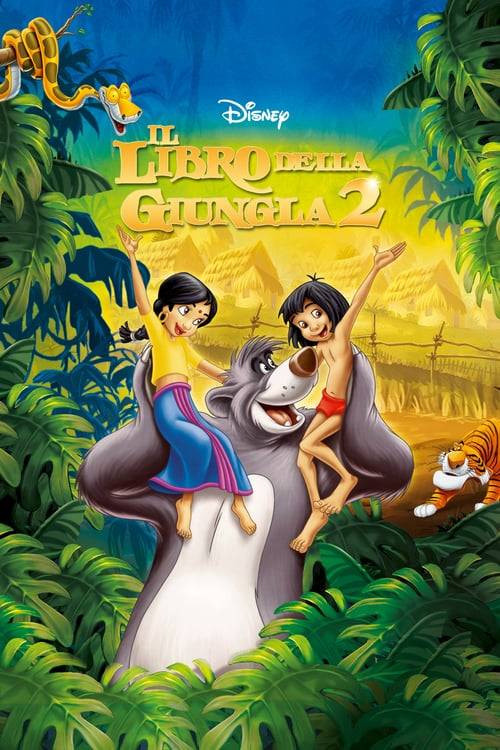
Il libro della giungla 2 Mowgli, il ragazzo della giungla, è stato accolto da una delle famiglie del villaggio e ora vive con due genitori affettuosi, il fratellastro Ranjan e ha una cara amica, Shanti.
0 notes
Text
Tudo é caminho
São onze horas da noite, apago as luzes e deixo de pensar os pensamentos. Retrospectivas daquilo que foi e daquilo que seria. Portanto há uma luz tímida que reflete em meus olhos, talvez seja algum sinal de amor que ainda resiste. Sinto o prana em meu templo, ouço a terra trabalhando e as sementes de vidas germinando. Tudo acontecendo ao mesmo tempo e eu ainda estou vivo. Enquanto chove ouço o estalar das telhas felizes ao cumprirem seu papel. Amanhã quem sabe elas terão folga e poderão ver as estrelas durante a noite inteirinha. Quem está preocupado com amanhã sou eu, não as telhas.. Vivemos de forma ineficiente desejando o fim das horas, dos dias, dos anos, das prestações, das tristezas e das alegrias. Em cada canto do meu espelho há uma fragilidade que sempre me lembra que a morte é eficiente. O relógio pula de uma mão pra outra e o que muda são as prioridades. A vida que passa. O sopro que passa. "Quem quase morre esteja vivo, quem quase vive já morreu". E a luz tímida ainda persistirá e estará importada em outros templos e em outros tempos. Penso onde não existo e percebo que não tenho o controle de nada a não ser de minha própria consciência de ser livre por estar vivo. Tudo é caminho. Om Shanti.
3 notes
·
View notes
Photo
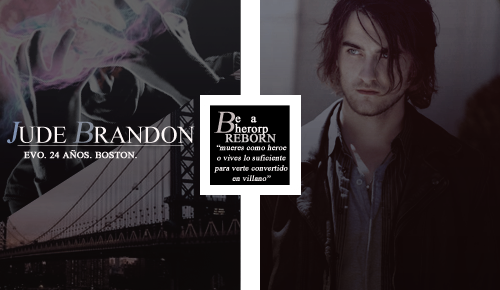
Nombre completo: Jude Brandon
Edad: 24 años.
Lugar de origen: Minnesota
Orientación sexual: Demisexual
Ocupación: Ha encontrado trabajo como empleado en unos grandes almacenes.
Faceclaim: Landon Liboiron
Historia.
Jude nació en una familia de clase media en las tierras de Minnesota, tuvo todo lo que necesitaba aunque no lo que quería ya que sus padres no podían darle todos los caprichos que deseara. Resentido por ello, Jude envidiaba a los demás niños que acudían con ropa o material mejor, o que para navidades tenían unos mejores juguetes que los suyos. Culpaba a sus padres por ser tan mediocres y no haber aspirado a algo más que ser meseros en un bar de la ciudad.
El carácter y las ambiciones de Jude lo llevaron a muchos problemas con sus compañeros de colegio y se ganó la enemistad de muchos niños, pero a él no le importaba demasiado ya que siempre se había considerado un solitario, sin muchos amigos ni gente que le importase. Pero fue al terminar el instituto que conoció a Abby, una joven que lo conquistó con su carácter dulce y amable. Le hizo ver que no lo material daba la felicidad, ni tampoco la envidia era una sana emoción. Por primera vez Jude sentía que podía confiar en alguien, querer a una persona, sobreponerla por encima de todo…
Fue en esa época que compartió con Abby que sus poderes se hicieron presentes. No le dio mucha importancia, hacerse invisible no suponía un daño para nadie… Salvo para sí mismo. Una vez que no podía controlarse y que andaba sin ser visto durante más de dos horas, acudió a casa de Abby para hacerle una visita –pensando que la presencia de la chica lo ayudaría a centrarse. Y fue entonces cuando su mundo se trastocó. Abby le estaba engañando con otro chico. Fue una bofetada para que despertara de la realidad: no se podía confiar en nadie.
Desde entonces se centró en controlar por completo su habilidad y tomó la decisión de no encariñarse demasiado con nadie. Además empezó a usar su invisibilidad para hacerse con todo aquello que sus padres no podían comprar, podía volver invisible un objeto al tocarlo y así era mucho más fácil robar. Sus padres al darse cuenta de que amasaba una pequeña fortuna empezaron a desconfiar y creyeron que el dinero procedía del tráfico de drogas, lo delataron a la policía y la tarde en que entraron a registrar Jude decidió marcharse y no volver a su hogar.
Viajó hasta Boston dónde se instaló en un apartamento de alquiler y empezó a conseguir pequeños trabajos temporales que le ayudaban a no llamar mucho la atención.
Personalidad.
✔ … Astuto, escurridizo y rápido de mente.
✘ … Desconfiado, cínico y narcisista.
Curiosidades.
Desde que tuvo esa decepción con Abby, antes de encariñarse con alguien primero investiga a la persona usando su habilidad. Ya que cree que muchos se muestran de una manera, cuando en realidad son muy distintos en la intimidad.
Roba todo lo que quiere, aunque no grandes cosas para no llamar la atención.
No tiene ni idea de la existencia de la compañía y de la agencia, vive ignorante a ello.
Le gusta fumar y beber, por lo que lo que más roba Jude es tabaco y botellas de licor.
Se contagió del shanti virus y aunque recibió la vacuna a tiempo, teme que lo acabe matando de un momento a otro.
Le ha cogido cariño a Liz Bell, con quién ha coincidido varias veces. Ha roto su regla de investigar antes a la gente con quién se junta y ahora tiende a relajarse en su presencia. Ignora que forma parte de la agencia.
Información específica del cupo (EVO)
Poder principal: Invisibilidad
¿A qué causa usa sus poderes?: A la suya propia.
¿Ha sido alguna vez capturado por la compañía o marcado por la agencia?: No, su poder la ayuda a no ser capturado… Pero tiene que ir con mucha cautela para que no le descubran.
¿Cómo llegó a descubrir sus poderes?: Primero empezó a manifestarse por partes del cuerpo, de repente no veía su mano o alguna pierna… La primera vez que se hizo invisible del todo fue en un centro comercial, cuando deseó poder llevarse unas deportivas sin que nadie le viera… Al final no pudo mantener la capacidad del todo y lo pillaron.
1 note
·
View note
Text
Changing your race in virtual reality
John Howard Griffin was perhaps the best-known race swapper of the 20th century.
In 1959, the white Texan writer went undercover as a black man in the Jim Crow South. Griffin spent days under a tanning lamp, took drugs for the skin pigmentation disorder vitiligo and shaved his head but otherwise spoke and acted exactly as he had as a white man. In assignments for the African-American magazine Sepia and later his acclaimed book Black Like Me, Griffin aimed to convey to white Americans what it was like to be the other. This was before Rachel Dolezal, Iggy Azalea or any of the Kardashians; blackness for him was not a cultural adornment but a target on his back.
After his transformation, Griffin was taken aback by how quickly his sense of self adjusted to a new identity. Peering in a New Orleans bathroom mirror for the first time after his temporary metamorphosis, he reflected:
"All traces of the John Griffin I had been were wiped from existence. Even the senses underwent a change so profound it filled me with distress. I looked into the mirror and saw nothing of the white John Griffin's past. No, the reflections led back to Africa, back to the shanty and the ghetto, back to the fruitless struggles against the mark of blackness. Suddenly, almost with no mental preparation, no advance hint, it became clear and permeated my whole being."
People around him flipped their behavior just as starkly. Black acquaintances who knew he was white lapsed into discussing "our struggle" with him; white women on the bus shot "hate stares" his way.
Through six weeks of travelling through Louisiana, Mississippi, Alabama and Georgia, Griffin conveyed to white people a truth that African-Americans had been saying for a long time and still holds today: People of different races in the US inhabit different realities.
Everything from police interactions to job applications can be experienced differently according to your race. As the comedian Dave Chappelle said in an interview earlier this summer, "If you had some glasses that someone could put on just to see the world how you saw the world, it'd be probably fucking terrifying."
Yet as Chappelle made those comments in a New York radio studio, it turned out Courtney Cogburn was working on something like that just uptown.
An assistant professor of social work at Columbia University, Cogburn and her team have been creating a project named 1000 Cut Journey in collaboration with Stanford's Virtual Human Interaction Lab, which is led by Jeremy Bailenson. Showcasing today for the first time at the Brown Institute for Media Innovation, the experience uses an HTC Vive virtual reality headset to put users in the body of a black man, Michael Sterling, at four different stages of his life. Titled in reference to the gruesome torture method of death by a thousand cuts, each scene in the experience is a composite of real-life stories -- garnered from the media and personal accounts -- that reveals the myriad ways race infiltrates one's quotidian experiences.
Essentially, it's a first-person simulation of the racism faced by a black male, for non-blacks to experience temporarily. Although tamer than Griffin's gruelling social experiment from half a century ago, its aims are similar -- except it's contained entirely within a headset.
When 1000 Cut Journey starts, you're seven years old and in the first grade. You begin by looking into a mirror and, like Griffin in that Louisiana bathroom, acclimatize to your new body.
Soon, it's free time in your modern but neutral-looking California elementary school, and three kids are playing with blocks on the floor as a teacher tutors some other students in math across the room. You physically crouch to join the kids making robots and fireballs with their blocks. "Mike is the black fireball," one of them says, to giggles from the other two. "Yours would be the scariest because yours is black and black is always the scariest."
One boy starts throwing blocks at the others' models. As soon as you join in and fling a block -- however tamely with your childlike hands -- they stop abruptly and stare. The teacher, a white woman, stands up, arms folded.
While your character and environment are 3D models, the other humans are all live-acted, and the teacher looms over you. "Mike, look at me," she orders. "I shouldn't have to tell you not to throw things in the classroom. You're being dangerous, and you're going to hurt someone." The next scene cuts to you in the corner, in front of another mirror reminding you of your new body, while your three classmates continue to play in the distance, seemingly oblivious to your embarrassment.
There is little interactivity in the linear experience but this, too, reflects racism: the unequal treatment you receive through little choice of your own.
You empathize with Michael's childhood innocence and feel the hot shame of being singled out for scolding by the teacher. The early demo I tried lasted only several minutes, and the simple 3D models were redolent of PlayStation 2-era graphics, but there was still a feeling of presence. There is little interactivity in the linear experience but this, too, reflects racism: the unequal treatment you receive through little choice of your own.
Most significantly, the scene revolved around the kinds of small incidents -- being stereotyped as aggressive, treated unfairly -- that may sound easy to dismiss in third person but when experienced first-hand in VR have a visceral impact.
"You may be affected even if you don't notice that it's happened," said Cogburn. "Even if you can't articulate to me what it was about the school scene that made you feel uncomfortable, we know what happened in the scene that may have triggered that response."
Virtual reality seems uniquely suited to revealing the hidden texture of implicit bias. In this context, the term -- also called unconscious bias -- refers to the subconscious reactions we have to people of other races. It's not about blatant racial epithets but subtle, socially conditioned beliefs that, for instance, black people are a greater physical threat or even feel less pain than white people. These biases often emerge in the open through the sorts of microaggressions that -- because they're unintentional and don't necessarily align with an individual's professed beliefs -- can easily go unnoticed by one person even as they're painfully obvious to the other.
Traditional three-act storytelling in films, books or the news homes in on specific moments of tension and drama, involving a protagonist, antagonist, conflict and resolution. Yet communicating implicit bias is less about clarifying moments of moral rightness, and more about showing the quiet, coded moments of racial bias that shape one's worldview and sense of justice over time. Virtual reality doesn't need to put a spotlight on a racial flashpoint nor list a series of facts about inequity to have an impact. By immersing you in another person's experience, you understand his hurt intuitively.
After the elementary school scene, 1000 Cut Journey places you in Michael's shoes at age 15 having his first encounter with the police; age 30, interviewing for an elite corporate job; and finally age 50, looking back at his life. (These scenes weren't yet ready in the build that I tried.) Taken as a whole, they have the potential to reflect the structure of racism: not isolated incidents but a pattern of little events that start in a child's formative years and accrete over the course of a lifetime, creating a window on the world that is fundamentally different from those in the racial majority.
"What I really want is for people to come out saying, 'I thought I understood this but I don't.'"
Someone who has lived through experiences like a run-in with police could find revisiting them in VR disturbing. But similarly to Black Like Me, this project is made primarily for those who have lived a different life.
"What I really want is for people to come out saying, 'I thought I understood this but I don't.' [For] whites, in particular, I would like for that to be the reaction," said Cogburn. "And for blacks and perhaps other people of color who go through the experience to come out saying, 'That's it exactly.'"
Virtual reality has long been touted as a vehicle for empathy through body swapping, and crossing race barriers has been part of several projects.
Nonny de la Peña's One Dark Night reconstructs the shooting of Trayvon Martin entirely from public records and 911 calls, showing what every witness saw or didn't see. Janicza Bravo's Hard World for Small Things is a short, powerful film that places the viewer amidst a race-related accidental shooting in LA. Earlier this year, Australia's public broadcaster SBS released a VR experience of racial abuse on a bus -- first from a bystander's perspective, then from the victim's.
1000 Cut Journey, however, is unique in its efforts to bridge narrative and social science. The project builds on specific research developments over the past five years in what's termed embodied cognition. One key insight from the field is precisely what the race swapping Griffin learned the hard way: When you change the body, the mind quickly follows.
In one study, white subjects were set up with a prosthetic dark-skinned hand. A researcher stroked the hand with a paintbrush while simultaneously stroking the participant's hidden real hand. The procedure took only a few minutes. Yet participants showed a drop in unconscious bias in the implicit association test, a common measurement of unconscious bias. In another experiment, brushing a white person's face with a cotton bud as he or she watched a video of a black person being brushed the same way led to subjects reporting that the black person's face looked more like their own.
"You can very easily fool the brain into thinking that a different body belongs to you."
"You can very easily fool the brain into thinking that a different body belongs to you," said Manos Tsakiris, a professor of psychology at Royal Holloway, University of London, who co-published these papers. "[Including] a body that has a different appearance than yours."
Subsequent studies applied these techniques to VR, putting mostly white subjects in dark-skinned bodies and seeing how their implicit bias decreased. Interestingly, the VR experiences themselves did not involve racially charged scenarios and contained no lessons on racism. Participants were simply asked to follow a tai chi instructor's movements, or play a photo description exercise, all the while conscious of their new bodies. The brain accepted its new skin and rearranged its biases and attitudes accordingly.
In contrast, an earlier study by Stanford's Bailenson explicitly asked white participants to imagine a day in the life of a black character, and then to act out a VR job interview as if they were that person. Their implicit bias ended up worse than subjects who played a white person in their interview. It's possible that instead of engendering empathy, participants relied on black stereotypes when told to imagine their world. An effective way to remove unconscious bias, it seems, is by showing not telling.
There are still open questions with this technology. How long, for instance, can a VR-induced reduction in racism last? (A 2016 study by the University of Barcelona's Mel Slater showed it could be effective after one week). What is the precise neural mechanism that takes place when we embody a different race?
The key issue, however, is whether changing attitudes in virtual reality can also change real-world behavior.
"As soon as you take off the head mounted display, you still find yourself in real reality," said Tsakiris. "This is where behavior matters. And this is where behavior has significant consequences."
The point could apply to many socially conscious virtual reality experiences, which don't get far beyond the film festival circuit or the university lab. Yet one key application could be in diversity training. The NFL has had discussions with Stanford's Virtual Human Interaction Lab in overcoming race and gender bias. Meanwhile, Alexandra Ivanovitch, founder of the nonprofit Equality Lab, is creating a series of first-person VR trainings with the Police Foundation, with hopes of bringing them to law-enforcement departments across the country. The idea is to allow police to virtually switch places with the communities that they are protecting -- such as people of color -- and therefore train them in racial sensitivity in a less didactic form than mandatory lectures.
"If we can actually have positive results in that type of environment, where the culture is historically not very favorable to racially sensitive programs, I think that we can make a tremendous impact across the board," said Ivanovitch. "We can make it across a whole variety of social impact areas, like schools, hospitals, court rooms."
Still, it's doubtful any virtual embodiment researcher would suggest that VR alone will end racism. The way that humans have carved into factions based on our most superficial physical traits is part of a political, economic and cultural structure that stretches generations. The point of these projects in race swapping is for people to comprehend that structure better. It's for a tech-enhanced degree of cross-cultural understanding that perhaps wasn't possible before; shortening the distance between one mind and another.
"We blame individuals because of their choices and their behaviors, and we don't think about history or policies that deliberately disadvantage particular people."
"As I see it now -- and this is not just for race, this is for any number of social issues, especially in the United States -- we're very individualized when we think about problems," said Cogburn.
"We blame individuals for their plights. We blame individuals because of their choices and their behaviors, and we don't think about history or policies that deliberately disadvantage particular people. It's that type of logic that I would like to shift."
Projects like 1000 Cut Journey are an illustration of how virtual embodiment can aid that shift. While virtual reality has already proved it can immerse us in fantastical narratives and games, experiences such as this show a far more socially compelling use: helping us understand the neighbors we walk past every day but hardly know. It's not using VR to escape the world, but to see it more clearly.
- Repost from: engadget Post
0 notes